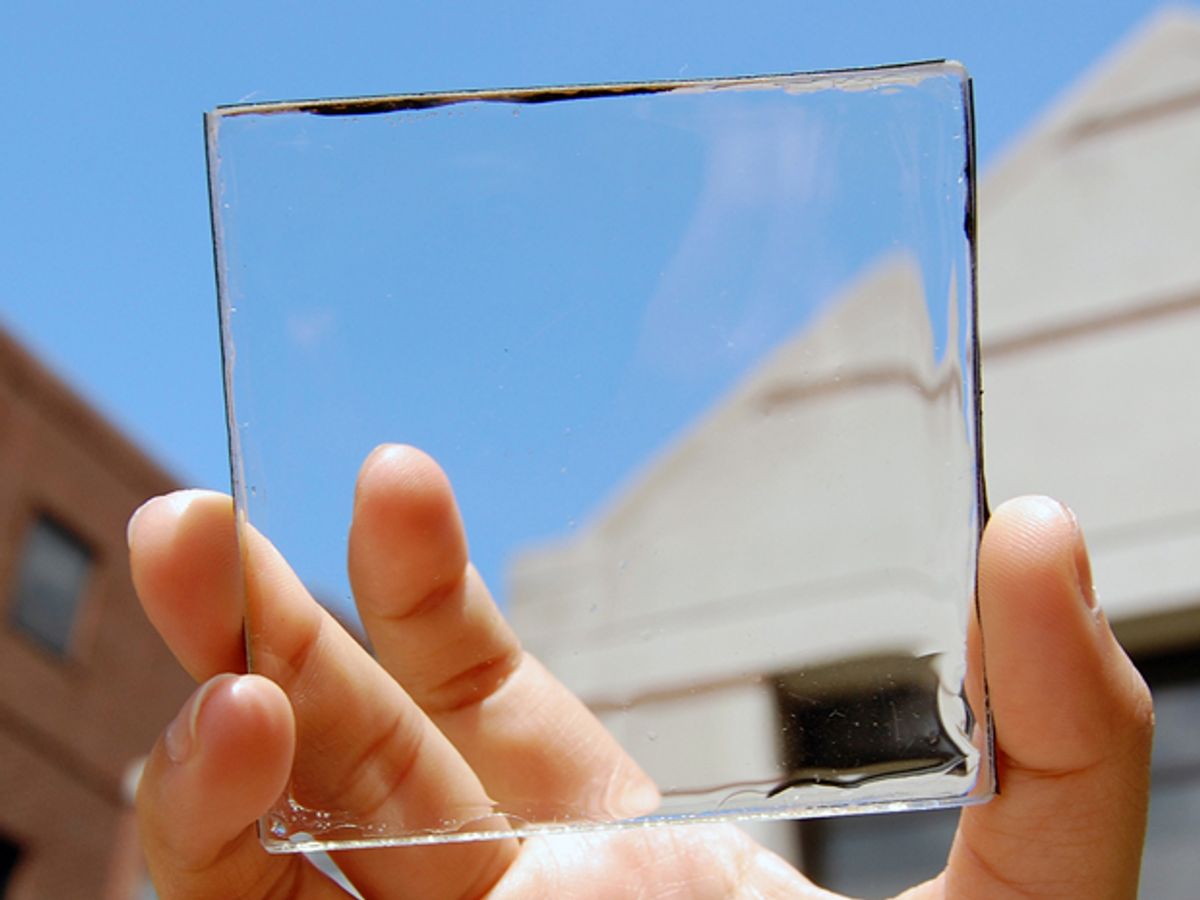The idea of solar windows has been around for some time now, and a number of different approaches—from spray-on solar cells to just really thin film possibilities—are under investigation. Though these are promising, the underlying issue with many of the ideas is that in order for them to work they need to stop some amount of light from getting through the window. And tinted windows are fine, in some situations, but too much tint turns a window into a wall. But not with a new idea out of Michigan State University, where researchers have created a solar concentrator that, if the efficiency is revved up, would provide truly clear, glass-like generators of solar power.
The team, led by Yimu Zhao of Michigan State's department of chemical engineering and materials science, achieved this by "exploiting the excitonic nature of organic luminescent salts that provide perfectly tuned near-infrared-selective absorption and even deeper near-infrared emission." The organic molecules are tuned to absorb only ultraviolet and those near-infrared wavelengths; they then "glow" at a different infrared wavelength. That second wavelength light is guided by the material to the edge of the plastic substrate and converted to electricity by thin bits of standard photovoltaic cells.
That means that no electricity production is actually done in the middle of the cell. With other "transparent" solar ideas, they are actually marred by tiny wires, or just require tinted or colored glass to absorb any of the usable wavelengths of light. "No one wants to sit behind colored glass," said the senior author of the paper, Richard Lunt, in a press release. "It makes for a very colorful environment, like working in a disco.
We take an approach where we actually make the luminescent active layer transparent." The transparency is assured because the organic molecules only "glow" in infrared, which humans can't see. The result, at least for us: a clear window. Compare that image above to, just for example, New Energy Technologies' spray-on solar window, at left.
The key roadblock, as with most any solar power idea, is efficiency. The Michigan State team has its prototype up to only about one-percent efficiency, far below what might be considered useful. The researchers say they hope to get it up to around 5 percent, and if it proves cheap to mass produce, then that would be plenty for some applications. And obviously, clear solar power does have a lot of applications: the obvious ones are the skyscrapers glimmering in most big cities these days, but Lunt said this could also be applied for smartphones or tablets as a self-charging screen that doesn't affect visual quality.
"Ultimately we want to make solar harvesting surfaces that you do not even know are there," he said.
Photo: New Energy Technologies
Dave Levitan is the science writer for FactCheck.org, where he investigates the false and misleading claims about science that U.S. politicians occasionally make.




